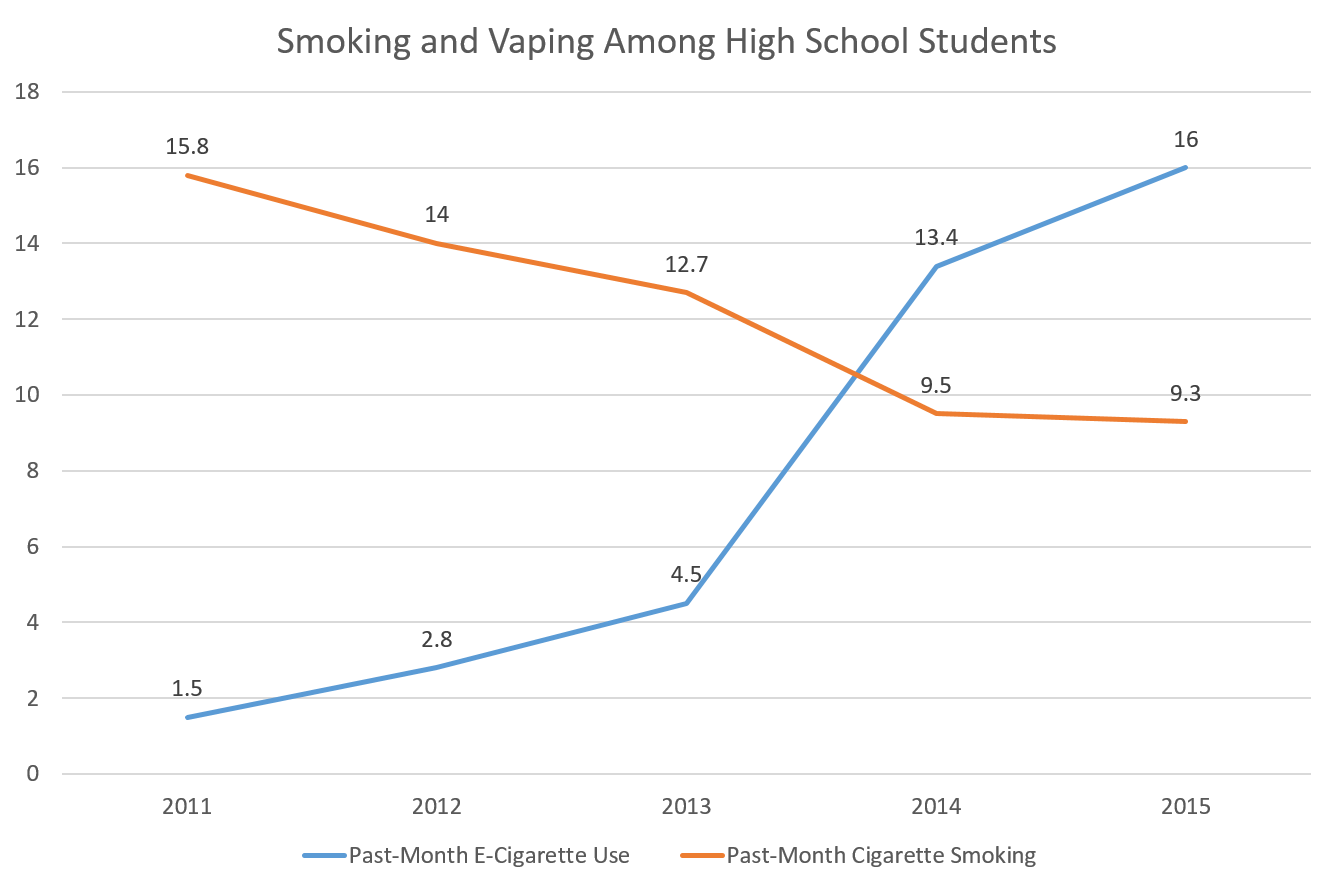Most Adolescent Vapers Are Not Nicotine Users
A new study makes the CDC's equation of vaping with tobacco use look even more ridiculous.

The Food and Drug Administration (FDA), having decided to regulate tobacco-free e-cigarettes as tobacco products because they deliver tobacco-derived nicotine, now has the challenge of explaining how even nicotine-free e-liquids can qualify for the same label. E-cigarette alarmists at the U.S. Centers for Disease Control and Prevention (CDC) have a similar problem. They insist on counting vaping as "tobacco use," which leads them to claim there has been "no decline in overall youth tobacco use since 2011," even though that is clearly not true. Now a new study in the journal Tobacco Control reveals the CDC's position to be even more ridiculous than it already seemed, showing that a large majority of teenagers who vape are not only not consuming tobacco; they are not consuming nicotine either.
Based on data from the 2015 Monitoring the Future Study, which surveys students in the eighth, 10th, and 12th grades, Richard Miech and three of his colleagues at the University of Michigan's Institute for Social Research (which conducts the survey) report that nearly two-thirds of teenagers who have tried vaping consumed "just flavoring" the last time they did it. "Nicotine use came in a distant second," Miech et al. write, "at about 20% in 12th and 10th grade and 13% in 8th grade." The other options were marijuana and "don't know."
The survey data indicate that the more frequently teenagers vape, the more likely they are to vape nicotine. Among high school seniors, 47 percent of those who had vaped six or more times in the previous month reported consuming nicotine, compared to 23 percent of those who had vaped one to five times in the previous month. But "in no case did the prevalence of nicotine vaping reach 50% or greater."
The fact that most adolescent vapers do not vape nicotine was mentioned in a summary of the 2015 survey results published last year, as Pennsylvania anti-smoking activist (and harm reduction advocate) Bill Godshall pointed out at the time. I noted that finding in a blog post last April and a column last June. But the Tobacco Control article presents more-detailed data on this question and highlights the CDC's mendacity.
It was already absurd to claim teenagers were using tobacco when they weren't, especially since the CDC used that inaccurate terminology to imply that the rising popularity of vaping somehow cancels out the health gains from the continuing decline in smoking, a far more dangerous habit. Now that it's clear the typical adolescent vaper is not even using nicotine, the CDC cannot assume any chemical connection between e-cigarettes and tobacco. Furthermore, its warnings that teenagers might start smoking after they get hooked on nicotine by vaping look even more overblown than they did before. As Meich et al. note, even the practice of referring to vaporizers as "electronic nicotine delivery systems" (as both the CDC and the FDA do) is quite misleading, at least in the context of adolescent use.
"The majority of US youth who use vaporisers and e-cigarettes do not vape nicotine," the authors write. "This finding challenges many common assumptions and practices." The numbers "suggest that the recent rise in adolescent vaporiser use does not necessarily indicate a nicotine epidemic," and they show how misleading the CDC's equation of vaping with tobacco use is. Meich et al. note that counting every vaper as a tobacco user doubles the supposed prevalence of tobacco use among 12th-graders and nearly triples it among 10th- and eighth-graders. If vapers are counted as tobacco users only when they vape nicotine (still a dubious maneuver), the effect is much less dramatic. "If vaporiser users are considered nicotine users only if they last vaped nicotine in the last 30 days," the researchers say, "then national estimates of nicotine prevalence increase by a much smaller percentage of 23–38% across the three grades," compared to the increases of 100 percent to 200 percent seen with the CDC's method.
In referring to "national estimates of nicotine prevalence," Meich et al. are being kind to the CDC, which describes adolescent vaping as "tobacco use" rather than "nicotine use." It turns out both descriptions are wrong. But don't expect a correction from the CDC. Although it is supposedly a scientific organization, the CDC refuses to call things by their right names when accurate terminology gets in the way of a good public health scare.


Show Comments (21)